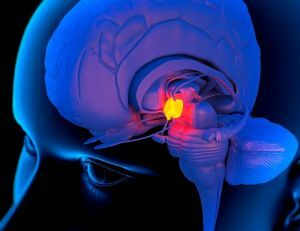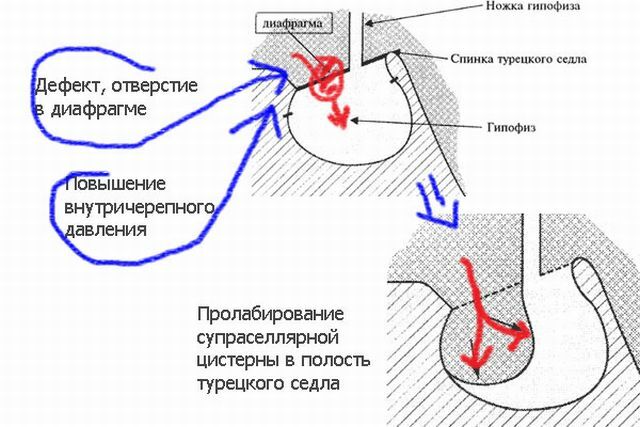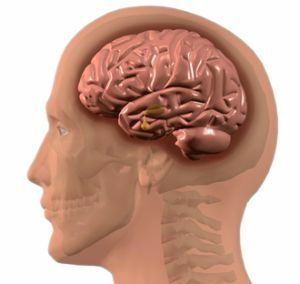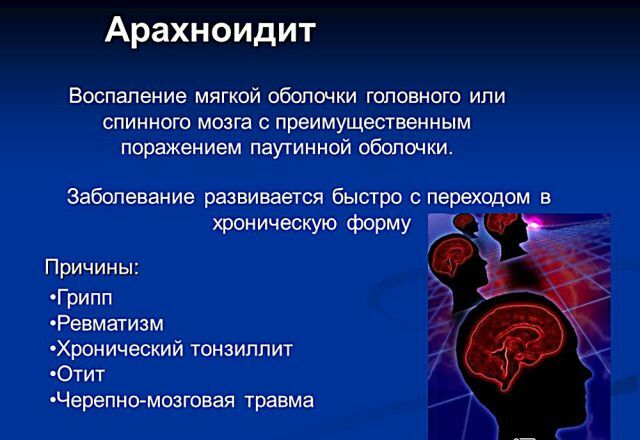
When considering the problems associated with the malfunctioning of the nervous and endocrine systems, one should pay attention to the syndrome of the empty Turkish saddle( SPTS).
This syndrome is a combination of problems in the activity of these systems of the body, which can manifest themselves one by one.
The disease is caused by the protrusion of the membranes of the brain. This process can occur in the flesh to the Turkish saddle, when the main secretion of the pituitary gland is squeezed along its walls.
Mechanism for the development of the
violation The term "Empty Turkish saddle" was introduced in 1951 after the pathologist V. Bush conducted a study of the material of deceased people whose death was not due to the malfunction of the hypothalamus.
Under the Turkish saddle is understood the formation of an anatomical character, which is represented by a segment of the sphenoid bone. This site concerns the process of creating the base of the skull. The name comes from the form of the saddles of Turkish horsemen.
In the fossa of the area under consideration is the gland, which is responsible for the formation of hormones - the pituitary gland. The hormones produced by the gland under consideration are involved in the growth processes, the development of certain organs. Also produced hormones regulate the exchange of certain substances in the human body, coordinate the work of internal organs and tissues.
Department of the pituitary gland is a process of the medulla, which is called the diaphragm of the Turkish saddle.
Among other features of the disease can be called that it is often diagnosed after 35 years and can develop up to 50 years. At the same time, statistics show that women are found to be 5 times more likely to have this disorder than men.
Women who become mother more than twice, diagnose the syndrome in question more often.

Primary and secondary syndromes
Classification of the disease depends on the causes that caused pathological abnormalities. On this basis, we can distinguish:
- The primary syndrome of is the manifestation of symptoms on the background of the absence of health problems, when the disease occurs without the manifestation of pathology of the pituitary gland.
- Secondary syndrome is manifested by a sharp reduction in size or partial destruction of the pituitary gland. The destruction of the gland can occur due to the passage of tumor processes, with the assumption of errors at the time of the surgeon's intervention, if the irradiation was carried out, in case of a hemorrhage, and so on. In most cases, the secondary syndrome of empty Turkish saddle arises against a background of insufficient size, a violation of the structure of the diaphragm of the Turkish saddle. This phenomenon can be hereditary or congenital, arise due to many serious diseases or a certain physiological condition.
The second case is possible only with the risk of expanding the diaphragm in case of a tumor, infection, due to a strong craniocerebral injury  and in other cases when there is a possibility of increasing the pressure in the cranial cavity.
and in other cases when there is a possibility of increasing the pressure in the cranial cavity.
Mechanism of the disease is the effect of an increased amount of circulating fluid on the meninges that pushes them into tight tissue and skull bones. This point will determine the thinning of the pituitary gland, and lead to a violation of its functional part.
The phenomenon of loss of pituitary control by the hypothalamus is the cause of the development of endocrine disorders. Also, there is the possibility of disrupting the work of the eye.
Symptoms of the disease
Some health problems may indicate the emergence of the SPTS.At the same time, the complete picture of the disease looks like constantly emerging and disappearing problems concerning the endocrine, nervous system and vision organs.
Neurological symptoms of the syndrome of an empty Turkish saddle are often exacerbated under stressful situations.
These include:
- Presence of a headache without an exact place of its occurrence. At the same time, the symptom is initially weak, then stronger.

- Leap of blood pressure .There is also a pain in the heart, shortness of breath and chills.
- Many patients complain of fear of , constantly haunting them, feel lack of air, and pains in the legs and abdomen.
- In some cases, a significant body temperature increase in is possible.
The disruption of the endocrine system is manifested as follows:
- significant weakening of sexual function;
- development of Isenko-Cushing syndrome;
- occurrence of diabetes insipidus;
- may also cause other metabolic disorders.
Dysfunction of the organs of vision is manifested as follows:
- double vision;
- severe lacrimation;
- significant reduction in the visual acuity;
- appearance of the effect of "shroud" if viewed under normal lighting;
- is the probability of changing the fields of vision, the appearance of edema and reddening of the optic disc.
Diagnostic approach
Diagnosis of the disease is carried out in the preparation of a report on the biochemical state of the patient's blood. You should also make a blood test for the presence of certain hormones and free T4, which allows you to identify endocrine disorders.
For more accurate examination, an X-ray examination or magnetic resonance examination is required. It is also possible to conduct a CT scan of the entire brain.
 When considering all methods of diagnosis, you should pay attention to the magnetic resonance imaging, which can be called a safe device for the implementation of the method of visualization of the chiasmatic-selar region.
When considering all methods of diagnosis, you should pay attention to the magnetic resonance imaging, which can be called a safe device for the implementation of the method of visualization of the chiasmatic-selar region.
This survey method differs from the others in that it makes it possible to obtain data on the state in any plane with a cut of only 1.5 millimeters. Also note the high degree of contrast of tissues.
MRI also reveals various indirect signs of hypertension in the intracranial area. It is often a concomitant sign of this pathology. Some experts say that MRI has a sensitivity of 100% in diagnosing the syndrome of an empty Turkish saddle.
Aims and methods of therapy
The main goal of treatment in the syndrome of an empty Turkish saddle is to eliminate symptoms. Drug treatment is used to eliminate signs of a violation of the autonomic nervous system:
- treatment of blood pressure jumps;
- increase immunity when it falls;
- removal of migraine symptoms;
- recovery of the cycle of menstruation and so on.
If you feel strong pain, it is likely that the doctor prescribes painkiller. Intracranial pressure, specialists not  are recommended to be eliminated with a medicamentous method.
are recommended to be eliminated with a medicamentous method.
One of the ways of treatment is surgical intervention. It is performed only in the event of a threat of vision loss. During the procedure, the structure of the diaphragm is restored-the plastic of the seatback of the saddle. If the disease has led to the appearance of a tumor, then it is excised.
If we consider the primary type of syndrome, it is worth noting that treatment is usually not required, the patient is registered. All symptoms manifest themselves to an insignificant degree, many of them do not cause bad sensations. In some cases, there is a need for hormone replacement therapy.
Regarding the secondary syndrome of the Turkish saddle, in this case everything is much more complicated. So the purpose of hormone replacement therapy allows to restore the endocrine system.
Forecast and implications of
The prognosis for SPTS is contradictory, as everything depends on the concomitant diseases that concern the brain and pituitary gland in particular.
 The complication that leads to surgery is the leakage of cerebrospinal fluid. There is also a possibility of squeezing the optic nerve or the sagging of the optic intersection.
The complication that leads to surgery is the leakage of cerebrospinal fluid. There is also a possibility of squeezing the optic nerve or the sagging of the optic intersection.
In the absence of clinical symptoms, the prognosis is favorable. However, it is necessary to undergo constant monitoring in order to determine in a timely manner the likelihood of complications.
So there is no prevention of the disease. People who fall into a risk group can conduct blood donation for analysis of its hormonal composition.
Also when seeing the symptoms listed above, you should consult your doctor.



